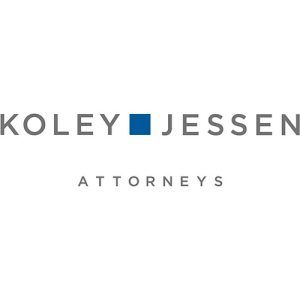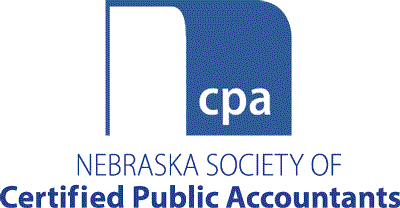Throughout the life cycle of farm and ranch operations, it is important to examine the business structures and tools used to meet owner objectives. When owners of closely held farms and ranches objectives adjust, their role in the operations may shift to other family members or to outside individuals taking over the day-to-day operation. This can often take the form of new or modified lease arrangements of farm and ranchland. These leases come in several different forms and, depending on the type of leasing structure used, can have unforeseen tax consequences. By taking a proactive approach to these leases, Nebraska advisors can help their farm and ranch clients optimize their lease arrangements and meet their business, succession, and tax objectives.
Three primary leasing arrangements are used in the agricultural industry: cash, livestock/crop share, and a range of hybrid leases falling somewhere in between. A typical cash lease involves a fixed dollar amount or a per acre/head rate that does not fluctuate with production. Livestock/crop-share leases involve the lessor receiving a portion of the commodities produced and sharing in the expenses of production. Lease structures are used to allocate the risk of production among the lessor and farmer/rancher with the lessor having minimal risk in fixed cash leases and completely sharing in the risk in livestock/crop-share leases. Hybrid leases can come in many forms, but often use a rent formula with a fixed and variable component based on production, changing the risk taken on by the lessor.
Aside from risk allocation, there are several areas to consider when reviewing and advising clients on agricultural leases: (1) income tax, (2) self-employment tax, (3) estate tax, and (4) USDA program payments. Whether the lessor is treated as “materially participating” in the farm or ranch operation is another component that can affect the treatment of these areas. IRS guidance provides specific tests to help determine whether a lessor is materially participating in a lease, but it would generally include activities that would show significant involvement in the production of the farm/ranch commodities.
Income Tax
Advisors must consider how the different lease forms affect the deductibility of certain land-related expenses. Some major items may or may not be deductible by the lessor depending on the lease form used:
Interest Expense – Interest expense is generally fully deductible under both cash and livestock/crop-share leases.
Soil Fertility Expenses – Lime and other fertilizers may only be deducted if the lessor is materially participating in the lease, meaning these expenses are generally not deductible under cash leases and may or may not be under livestock/crop-share leases depending upon the lease terms.
Conservation Expenses – Soil and water conservation expenses are similar to soil fertility expenses except, if the lessor is materially participating in the operation, the expenses may be deducted immediately; otherwise, they must be capitalized into the cost of the land.
Other items such as income averaging and the exclusion of certain USDA payments may also only be available under livestock/crop-share leases, depending on whether the lessor is considered to be materially participating.
Self-Employment Tax
Self-employment tax may also be imposed when the lessor is materially participating in the lease. For passive rental activities, such as under a cash lease, rental payments are generally self-employment-tax free. However, under livestock/crop-share leases, the lessor may or may not be materially participating in the operations depending on the requirements of the lease and the lessor’s activities. These leases must be structured properly to ensure self-employment tax is not imposed, especially if those rental payments are made from a related entity to the lessor in which an exception to the general rule may be triggered. Additionally, the leasing of farm and ranch equipment usually triggers self-employment tax for the rents received. However, through proper planning and structure, these rental payments may be able to be tied to the lease of farm or ranch land and not be subject to self-employment tax.
Estate Tax
If your client is likely to have estate tax issues at death, a landowner client may be able to utilize the special use valuation election at the time of the client’s death to reduce the value of certain qualifying farm or ranch real estate up to $1,310,000, depending on valuation methods used. Several requirements must be met to make the special-use valuation election, one of which is that the lessor must have materially participated in the operation in which the land was used for five of the last eight years before retirement, disability, or death. For this reason, it is important for advisors to closely analyze lease arrangements used by farm or ranch clients close to retirement or death. While this can reduce estate tax consequences, the necessary leasing arrangement may have the inverse effects related to self-employment tax and overall business objectives.
Agricultural Program Payment
The leasing arrangement used may also have effects on the lessor’s ability to receive certain USDA program payments. Among other limitations, an individual must be considered to be “actively engaged in farming” to be eligible to receive many USDA program benefits. Cash lease lessors are specifically treated as not being actively engaged, while lessors under livestock/crop-share leases may meet the actively engaged requirements if the rents received are tied to the actual production of the operation. The USDA payment limitation rules can be somewhat complex and must be navigated carefully to ensure the leasing structure chosen does not run afoul of these rules.
Periodically reviewing current leasing structures and client objectives will help ensure your client maintains leasing arrangements best suited to achieve their objectives in a tax-efficient manner. By taking a proactive approach, advisors can add value to the client’s business and reduce unforeseen consequences in the next phase of its life cycle.

Nate Patterson is an attorney in the Estate, Business Succession, and Tax Department at Koley Jessen. Patterson works closely with each client and their team of advisors to implement estate, business succession, and wealth and tax planning to ensure each client accomplishes their personal and financial objectives and leaves a lasting legacy. With hands-on experience operating and managing a family farm, he also provides “boots on the ground” expertise to agriculture clients and family businesses on planning matters specific to the ag industry. He can be reached at
nathan.patterson@koleyjessen.com.

Nicholas Bjornson is an attorney in the Tax Department at Koley Jessen. His experience in dealing with tax issues and implementing business strategies provide members of the agricultural community efficient solutions to achieve optimal tax benefits and economic consequences. He also represents taxpayers in disputes with the Internal Revenue Service, the Nebraska Department of Revenue, and other state and local taxing authorities. He can be reached at nicholas.bjornson@koleyjessen.com.











